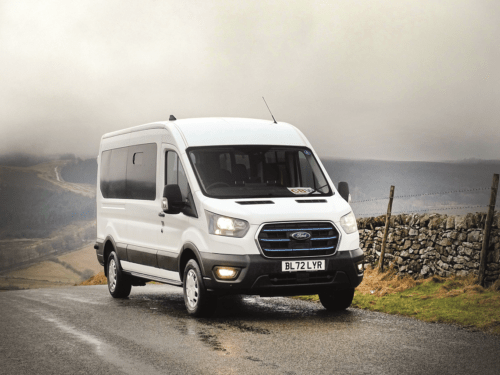
How do you take the iconic diesel-powered Ford Transit, electrify it, and create a minibus for the future? Richard Sharman visits Minibus Options to find out
The all-electric version of the world’s best-selling cargo van – the Ford E-Transit – is now available as a minibus, thanks to a collaboration between Ford and Whalley Bridge-based Minibus Options.
CBW is no stranger to road testing high quality vehicle conversions from Minibus Options, but the E-Transit test drive was one I was particularly looking forward to. Having started in the industry in a company whose fleet was 90% Ford Transits of the 1987 and onwards era, and then having experience with different model generations a decade ago, it was going to be interesting to see the evolution.
But before we get to the test drive, I wouldn’t be doing the E-Transit justice without running through the development process of the hugely important change to the Ford product line up. It was 58 years ago that the very first internal combustion engined (ICE) example rolled off the production line, so Ford has nearly six decades of operators that expect the new E-Transit to deliver on its heritage and be better than perfect from day one.
[…]By subscribing you will benefit from:
- Operator & Supplier Profiles
- Face-to-Face Interviews
- Lastest News
- Test Drives and Reviews
- Legal Updates
- Route Focus
- Industry Insider Opinions
- Passenger Perspective
- Vehicle Launches
- and much more!


